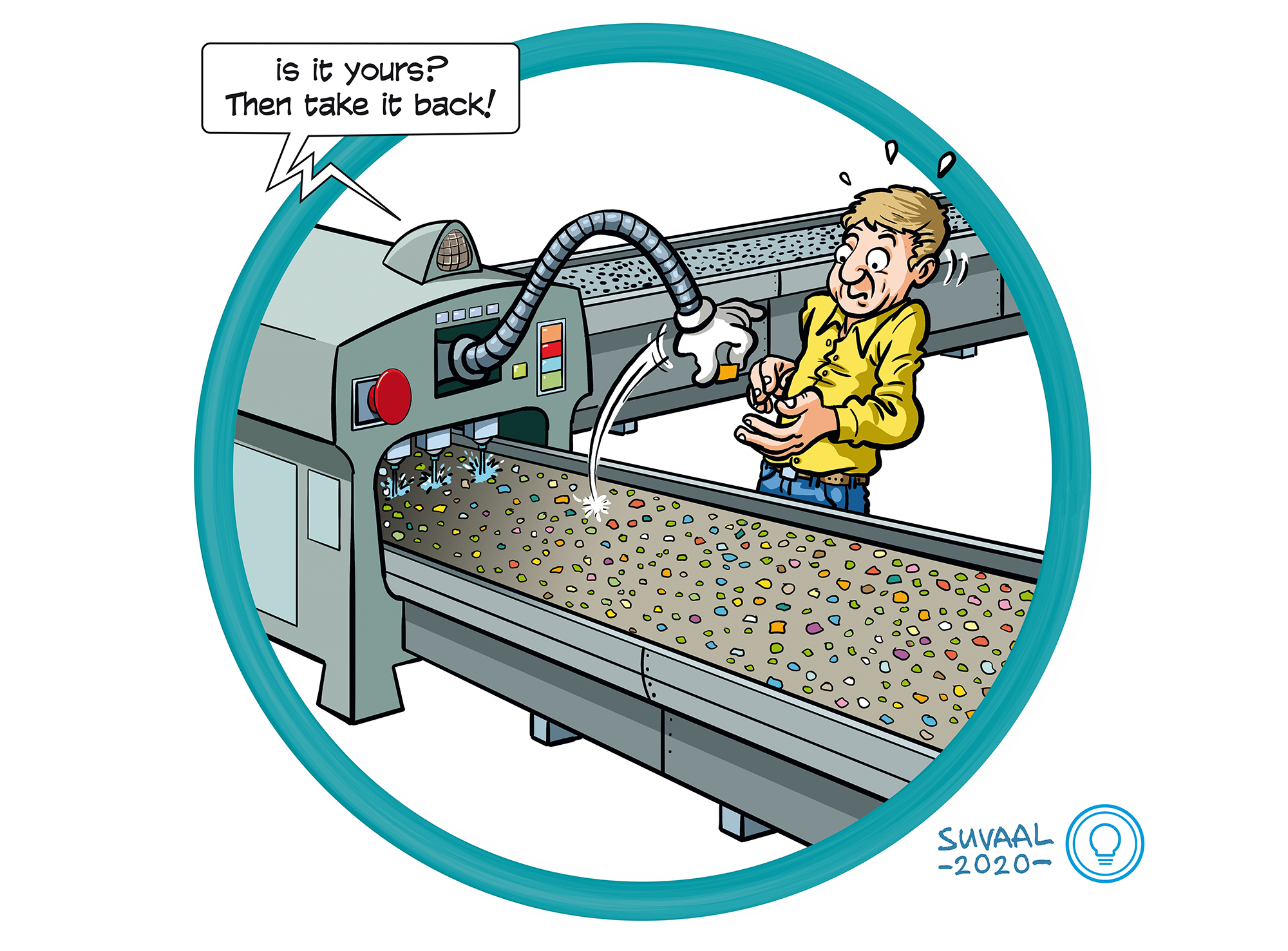Return plastic back to the same manufacturer
Themes: Materials, Social Impact,


A TRL is a measure to indicate the matureness of a developing technology. When an innovative idea is discovered it is often not directly suitable for application. Usually such novel idea is subjected to further experimentation, testing and prototyping before it can be implemented. The image below shows how to read TRL’s to categorise the innovative ideas.
Summary of the project
Plastic recycling can only become truly circular when it is possible to separate plastic flakes based their chemical composition. For recycling perfect purification of our plastic waste is essential. Not only are there many different types of plastic that can be used for the production of everyday products. Each product – from lids, to shampoo bottles or plastic bags – has its own special recipe which makes recycling plastic difficult. Hence, if the flakes don’t have the exact same properties remelting them into new plastics will result in the loss of the good properties of the plastic and in value. The researchers aim to develop a way through which plastic can be recycled on such a specific recipe basis. The difficulties are how to recognize the various types of plastic flakes and subsequently how to extract the targeted or desired flakes from a mixture.
In order to develop a cheap and efficient solution, that can be massively used when ready the researchers use available ‘low’ technologies for measurement. To be able to recognize the specific recipe of a plastic flake the researcher is using infra-red spectroscopy scanning the various flakes. By comparing the plastic properties with the IR spectra the researcher aims to build a fingerprint library for each type of plastic.
When plastics are recycled they are shredded to a very small size so they are very pure and not contaminated with another type of plastic. However, when we sort on this small scale we need to deal with a huge amount of flakes at the same time which asks for high resolution, accuracy and efficiency of the extracting process. Using a technology which is similar to our ink jet printer, using super small water jets instead of ink jets, the researcher is able to target the desired flakes because it is precisely controlled, separating wanted flakes from the rest. He is building a giant water droplet printer which can be controlled as a normal printer.
What's next?
The next step is to integrate the two technologies; so a sensor which can read the fingerprints will precisely steer the droplet printer to remove the wanted flakes from the mixture. And once that is done we need to build a fast sorting plant for plastic.
Dr. Pingping Wen & Dr. Benjamin Megevand
Prof. dr. Peter Rem
Circular Institute
Additional information
- Dr. Pingping Wen
- Dr. Benjamin Megevand
